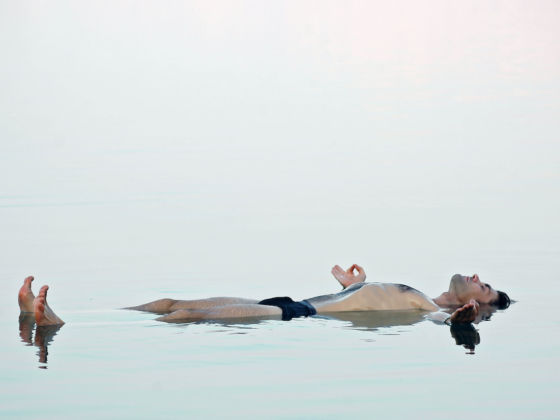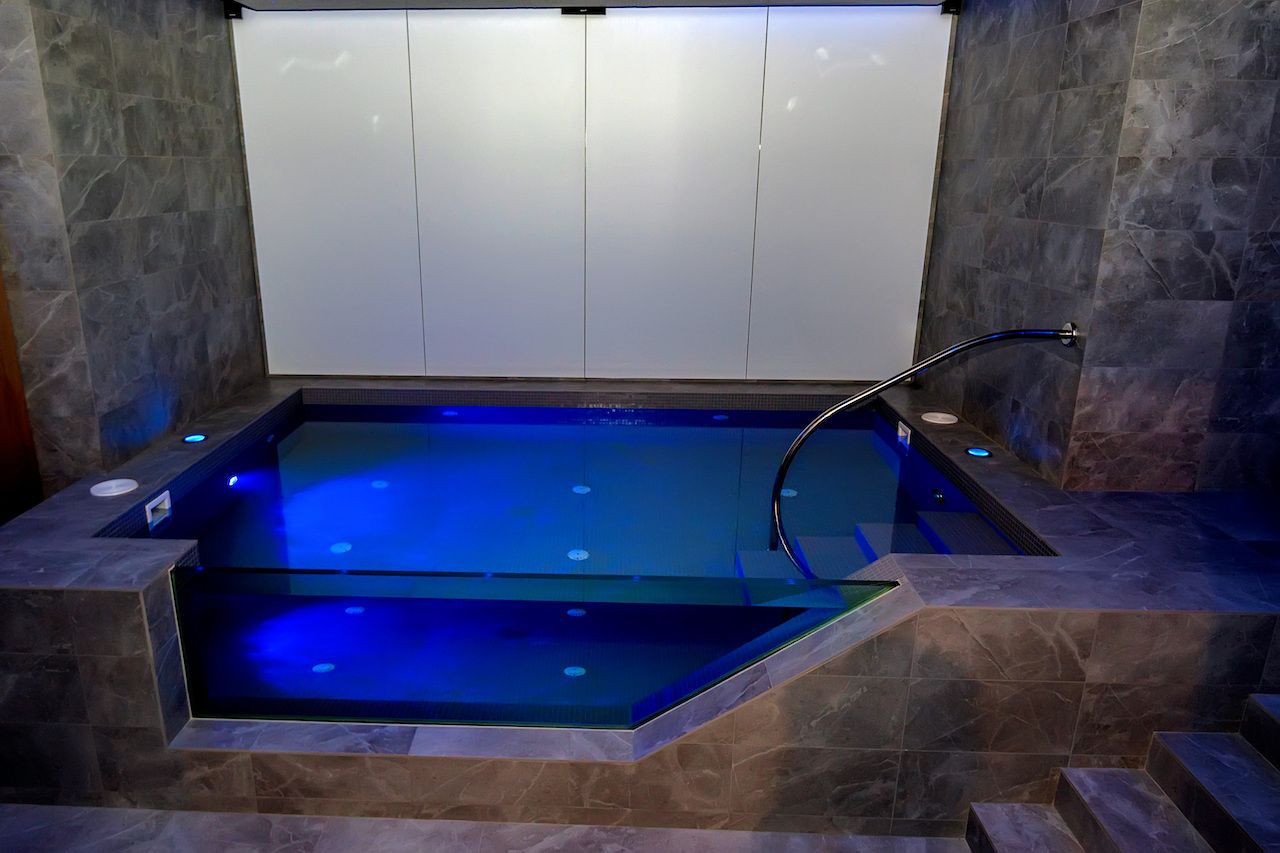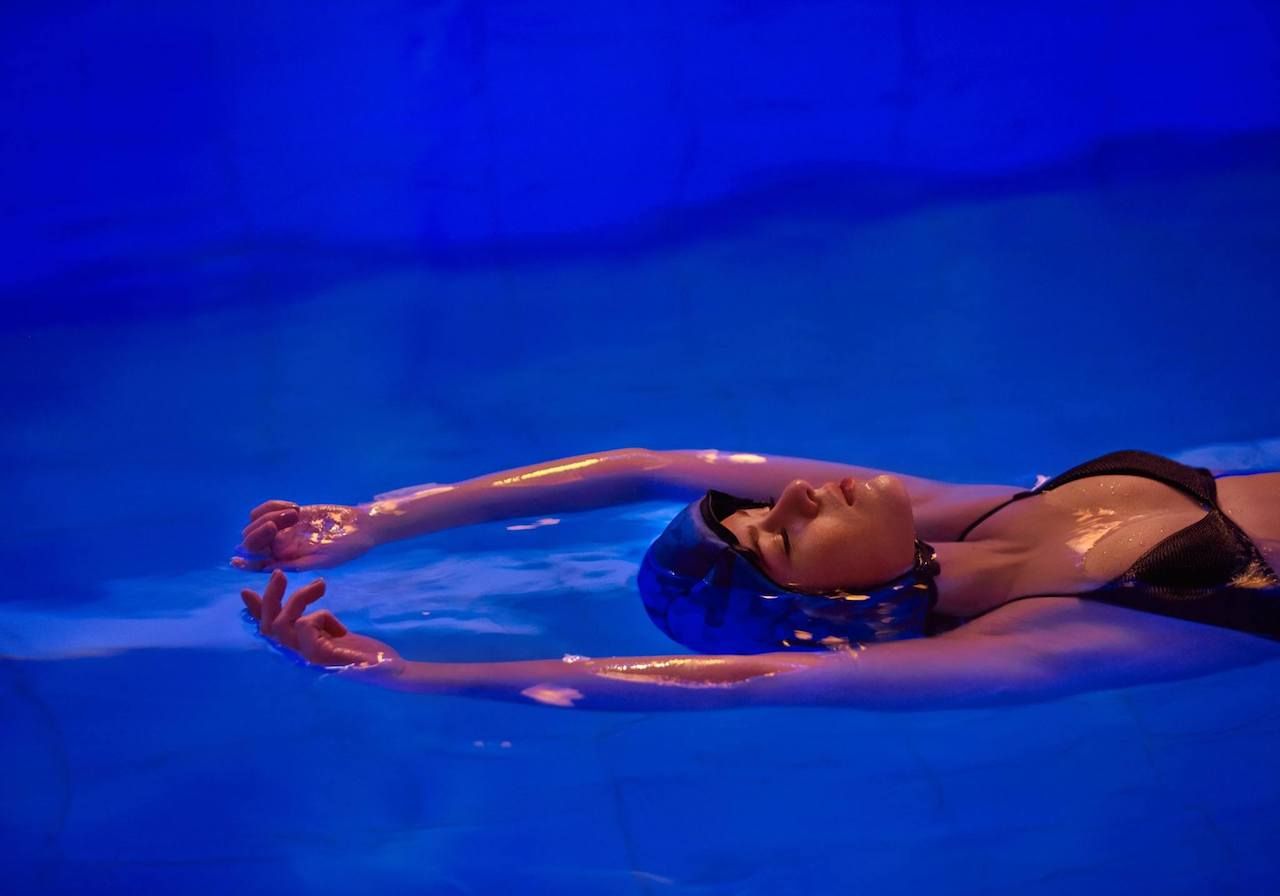Floatation therapy has become the go-to healing experience for everything from jet-lag to jangled nerves — but what’s it all about? Devotees of the practice claim floating in a dark, womb-like tank of warm, salty water will heal body, mind, and spirit from the stresses of modern life. In fact, floating has become so popular since the 1950s — when the first “sensory deprivation tanks” appeared on the scene — that most towns and cities now have their own float center. Once you try it yourself, you’ll understand why it’s arguably the most relaxing wellbeing practice available. If you are wondering what all the fuss is about, here’s everything you need to know before your first floatation therapy.


Everything You Need to Know Before Your First Floatation Therapy
What happens during the practice?
Inside a floatation tank, our central nervous system gets a break from processing external stimuli, and our body shifts into a state known as parasympathetic response. In this state, healing happens at an accelerated rate, blood pressure and heart rate drops, and our immune system gets a boost. Floating in the dark and quiet allows our brains to drop into the deepest state of relaxation — the Theta brainwave state — which supports profound learning, heightened creativity, and personal growth. Neuropsychologist Justin Feinstein, who is studying the benefits of floating for treating Post Traumatic Stress Disorder, believes it may offer a shortcut to a meditative state for people who otherwise struggle with meditation.
Preparing for your first float

Photo: Yakov Oskanov/Shutterstock
Before you jump in and drift away, there are a few things you should know.
- Try to avoid drinking for two hours beforehand, and use the toilet before you hop in the tank. You can get out if you need to but will benefit much more if you remain undisturbed.
- If you have any exposed cuts or get salty water into your eyes it will sting like crazy. Apply waterproof plasters to any small cuts or scratches, and avoid touching your face once you are in the water.
- Wear nothing except for a pair of earplugs to keep the salty water out. Floating naked leads to the most relaxing womb-like experience and helps to keep the water clean too. The water and air inside the flotation room will be heated to the temperature of your skin, so you won’t be distracted by contrasting temperatures.
- Shower thoroughly before and after your float to keep the tank clean and wash the salt from your skin — it can cause dryness and irritation if left.
Setting yourself adrift
Once you step down into the tank and lie back in the water, prevent yourself bobbing about by touching the sides of the tank for 30 seconds or so until you feel stable in the water. Then relax your arms and legs, and you should float steadily in the center without any further effort. You will now be alone in the dark with your thoughts for an hour or more, which might feel daunting for some. Quieting the mind takes time and practice, so don’t be disheartened if you feel distracted or restless. Seasoned floaters recommend that you relax, let go of expectations, focus on your breath and simply allow your mind and body to adjust to the new environment.
Everyone’s experience is different, but most report feeling euphoric, rejuvenated, energized, and clear after a float session, with heightened perceptions of sensory stimulus. Take a few minutes — or longer if you can — to integrate the experience of floating, and prepare for the outside world. Most float centers have a relaxation area where you can enjoy a glass of water or herbal tea and adjust gently to the world beyond the tank.
Wild floating

Photo: Hrecheniuk Oleksii/Shutterstock
For those who prefer to relax out in nature, you can experience the benefits of floatation therapy in any naturally occurring salt lake.
The Dead Sea, situated between Jordan, Pakistan, and Israel, is perhaps the best-known destination for wild floating and one of the most saline bodies of water on Earth — almost 10 times as salty as the Pacific Ocean and completely hostile to life. In the US, the Great Salt Lake in Utah can be accessed for floating from Antelope Island State Park, which lies about 40 miles north of the city and has campgrounds and shower facilities, as well as roaming herds of bison and sheep.
Moving to Africa, Lake Assal in Djibouti has the highest salinity of any lake outside of Antarctica and is one of the hottest places on earth. The lake has formed inside a volcanic crater lying 150 meters below sea level, which can be found about two hours out of Djibouti City along National Road 1. If you are in South America and make it down to Chile, Las Lagunas Escondidas is a collection of small turquoise saline lagoons situated roughly an hour’s drive from San Pedro de Atacama. Here you can enjoy a cool, relaxing float against a backdrop of ice-capped mountains, with simple shower facilities available to rinse off the salt.
Assisted floating

Photo: Flothetta/Facebook
If you love the idea of floating but accessing a salt lake or float center doesn’t work for you, you can still get involved and experience the benefits of weightless relaxation in water. Flothetta — a specially designed therapeutic kit originating from Iceland — lets you experience floating in a normal swimming pool while wearing an inflatable helmet and knee pads.
Alternatively, Watsu water massage — originating from the Harbin Hot Springs of California — combines support in the water by a trained practitioner, with muscle stretching, Shiatsu massage, and dance movements. A Watsu therapist takes clients into a warm hydrotherapy pool where they can completely let go as the body is gently manipulated using the water’s resistance to create flowing movements. The combined pressure of water and massage improves lymph drainage and reduces swelling, as well as providing pain relief and improving mobility.
Floatation therapy brings such a range of benefits for body, mind, and soul through the simple, accessible experience of floating in water — it’s easy to see now why it’s so widely practiced and becoming more popular.